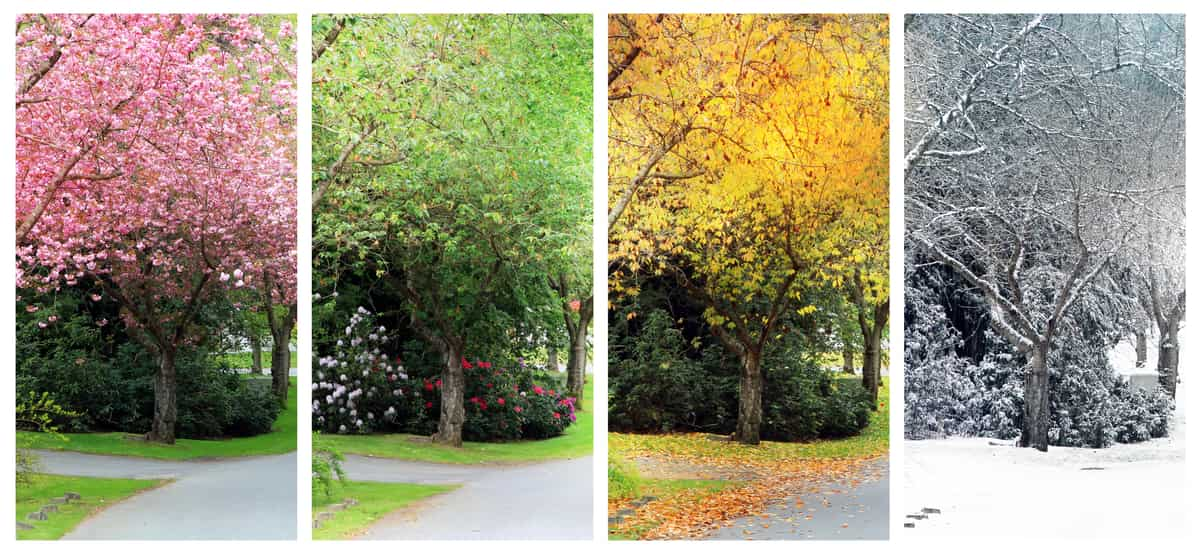As long as humans have been able to communicate, we have woven stories that give meaning to everything from the nature and beginnings of existence to reasons for natural phenomena. Humankind has always endeavored to understand what is not ostensibly clear. We are a curious lot, so to speak, and the emergence of scientific knowledge and technology, whilst illuminating, has never completely satisfied our need for allegorical explanations that in turn, fire our imaginations. This is not to say that stories threaded across the fabric of history are untrue. Indeed, truth is subjective. However, our tales tend to align themselves along the same sorts of broad subjects, and even mirror each other from culture to culture. Civilizations that for all we know never knew of each other, still weave the same narratives, even introducing the same symbols as part of their lore.
One of the most frequently used symbols reproduced as both icon and motif across cultures, is the Tree of Life. Sometimes called The Tree of Knowledge, or Cosmic Tree, the symbol lends itself well to our need for spiritual reflection and knowledge. Indeed, trees have long-been held sacred in all cultures, utilized in story, art, and literature to illuminate esoteric concepts. Amongst the subjects that The Tree of Life has been used to articulate, the structure of the universe and connection among all things, are two of the most prominent. This article aims to briefly delve into the Tree of Life concept and discuss its continuous use in the history we fashion for ourselves
The Basic Building Blocks of Life
As a symbol of the structure of the universe, we see in its depictions across cultures that its roots are planted firmly and deeply into the Earth. It is grounded in our world and rooted there taking its nourishment and existence from the soil.
The trunk stretches upward, showing the plane of existence on which all earthly living things exist, branching outward endlessly, at once symbolizing all creatures as individuals, yet unified, connected, and ideally symbiotic, existing in harmony. It reminds us that the state and meaningfulness of one life affects us all and thereby none of us are ever truly alone. We are all children of the Earth and take our survival from her. If she is ill-used, the plane of existence, or trunk, where we live, is affected accordingly and we suffer with her whether we are mindful of that suffering or choose to ignore it.
The tree of lifes upper branches stretch outward into the sky, demonstrating that the top tier or universe is connected to us, to the Earth, and that this connection is continuous. After all, the universe gave birth to the planet we live upon and things that take place there have always affected us. Much as everything around us, within us, and above and below us was formed and created by stars, the entities which formed metals and the basic building blocks of life within their cores, the tree, by stretching upward, pays homage to that creation and provides a continuous path of connectedness. It reminds us that the circle of life bound within the tree does not end. Even as the tree grows, blooms, and then sheds its leaves in the winter, it does not stop with the cold snows or months of shortened days. Rather, like all things in the universe, there is formation, birth, growth, fullness, decline, death, and then rebirth from the elements shed when a living thing dies. The very substances that decay and dissolve in the Earths soil and in the soil of the Universe or space, reconfigure in time, and live again.
Other Meanings of The Tree of Life
Though interconnection and the linked structure of the Universe are the most frequent archetypal themes woven into the tree of lifes symbology, there are other threads in the tapestry of stories and motifs that it represents. The tree has been used to demonstrate ones connections to ancestors and family via branches and a central trunk. Indeed, we see how when researching or tracing ones relatives, both seasoned researchers and hobbyists simply exploring their roots use the symbol of the family tree. The tree as a complete entity and the tree as a composition of many parts working in harmony, lends itself perfectly to the structure of a family, a group of unique individuals who are linked by blood, likeness, name, and ancestry.
With all this talk of connection and unity, it might sound strange to posit that the tree of life also has been used across cultures to demonstrate individuality. But . . .
The Tree of Life symbolizes one’s individuality as trees are all unique with their branches sprouting at different points and in different directions. It symbolizes a person’s personal growth into a unique human being as different experiences shape them into who they are. Over time, trees gain more unique characteristics, as branches break off, new ones grow, and as the weather takes its toll – all throughout which the tree remains strong and sturdy. This is a metaphor for how people grow and change throughout their lifetime and how their unique experiences mold them and enhance their individuality.
Finally, the tree of life also evokes the cycle of birth, rebirth, and eternal consciousness. As stated above, the tree sprouts and grows into a seedling, budding in the springtime and bearing fruit, blooms, leaves, or combinations of those. With the autumn, its cycle of photosynthesis slows, leaves are shed, and winter brings bare branches and what appears to be death. However, within the earth, the components of new leaves and blooms are nestled in the cold and once again come forth in budding life, emergent in the spring. Even as the tree ages, it lives over and over every year creating new seeds, new saplings, and new life. It gives birth to itself over and over, never truly dying. It reminds us that we are the same. Our bodies are vehicles of our souls, not the sum total of our existence. When our bodies die, the components that made them up return fostering new life. Our consciousness and essence, like the seeds shed from the tree of life, springs forth again, and we live on in endless forms, our souls evolving.

CONCLUSION

Whether we examine the oldest examples of the Tree of Life from Ancient Turkey, whether we study the deep and culturally-pivotal symbology that the tree held for the Ancient Celts, or even if we examine its use in our modern times, we see that the central tenets of what the tree of life portrays havent changed. It imbues us with the knowledge that all things are connected; it bids us to reflect upon how one must always be mindful because both positive and negative actions affect others and the world around us. Moreover, and perhaps most fundamentally, it reminds us that we are social creatures. We are individual and unique, but also in need of each other in endless ways. Even the most reclusive amongst us carries a biologically-based need for contact with others and a desire to give and receive the energies we all effervesce. Likewise, the most inherently meaningful concept embodied in the tree of life is our interconnectedness. This ancient symbol, this ageless tree intrinsically shows us that woven throughout our lives, with all the joys and sorrows, with all the lessons learned through laughter and tears, we all affect and depend on each other. What one individual does or does not do, the energy one creature puts forth or retains, the love one life spreads or the hatred that it sews, affects all things, echoing endlessly above and below. The tree reminds us that we are simultaneously One and Many, we are all formed from the same building blocks, and ultimately no one is ever, ever truly alone.
Informational Sources:
https://www.onetribeapparel.com/blogs/pai/meaning-of-tree-of-life
